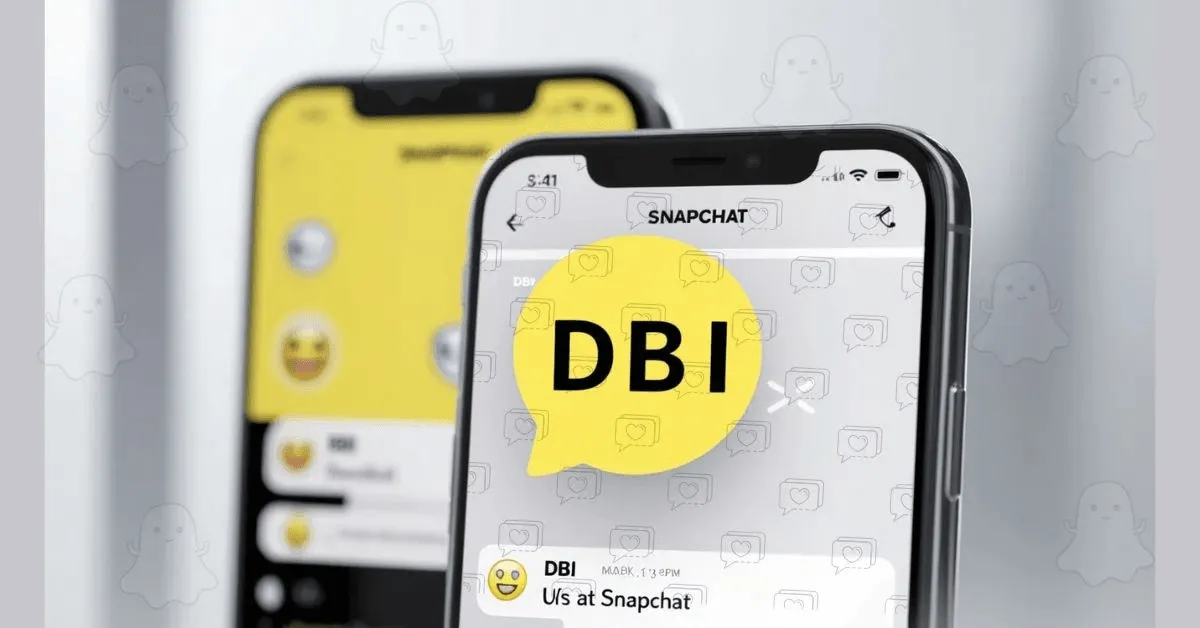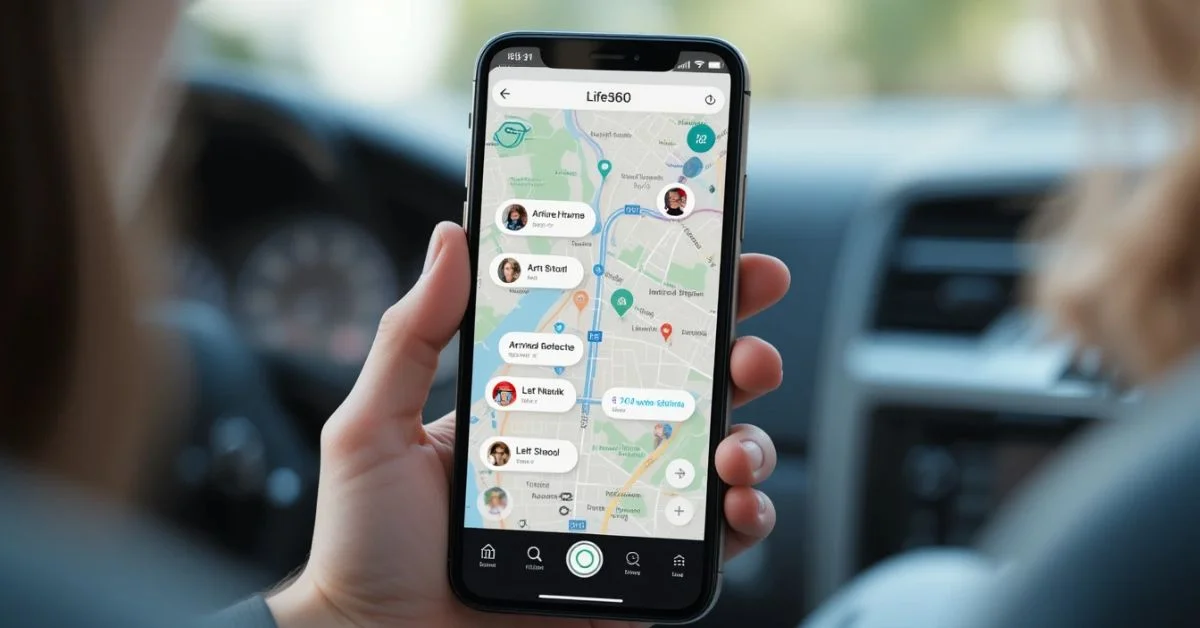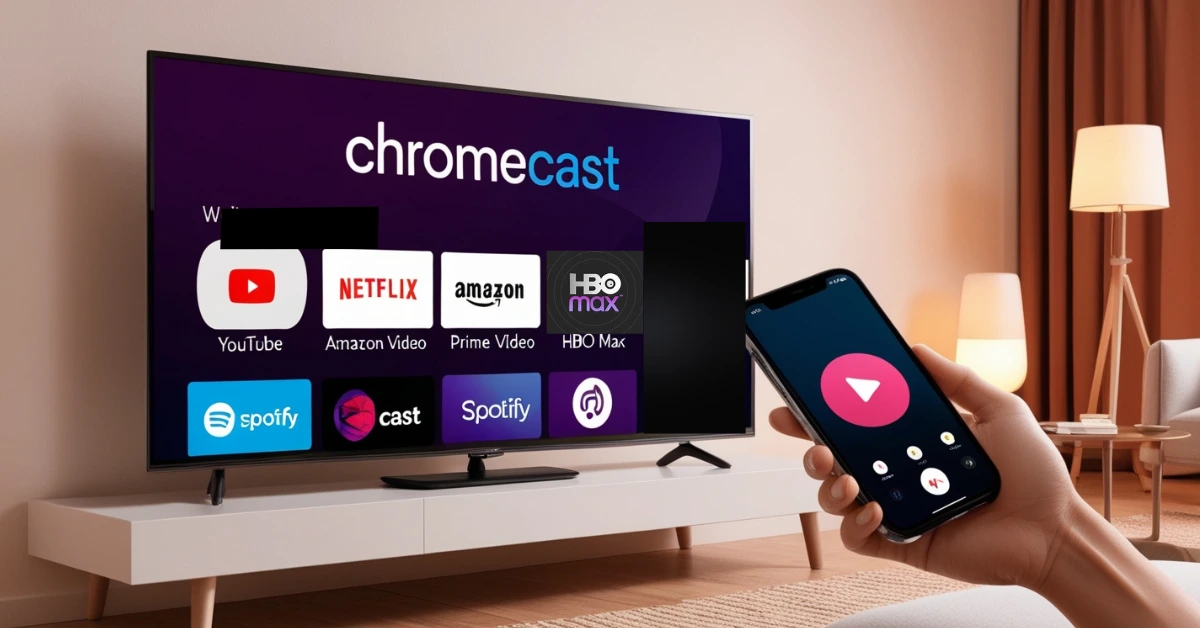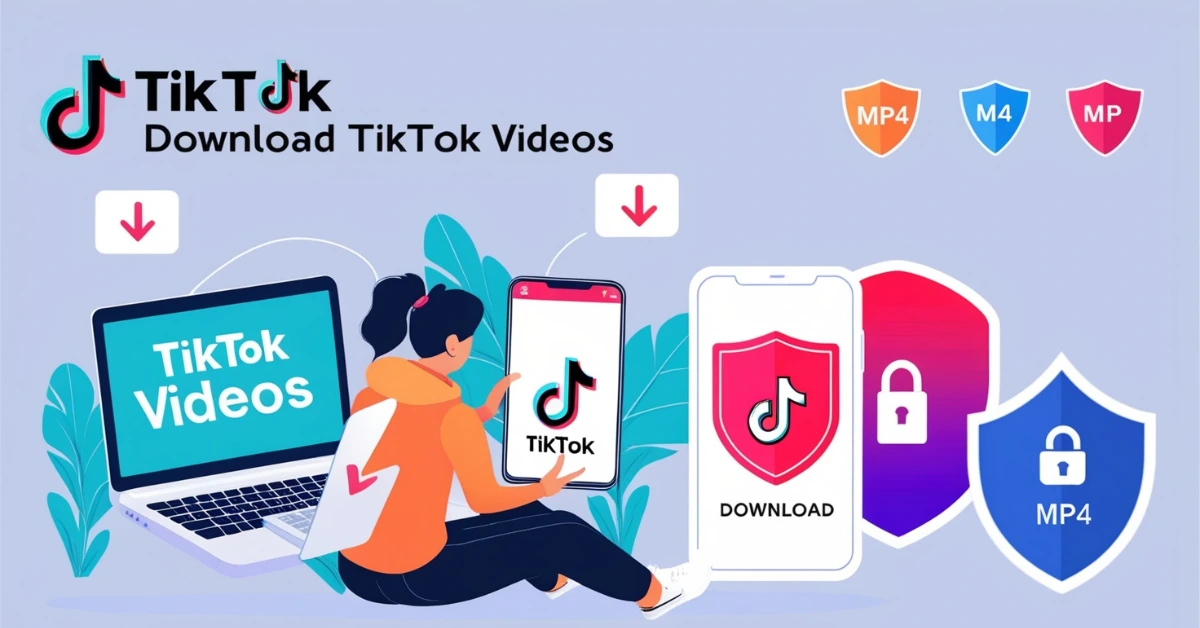Snapchat is all about quick chats, fun images, and short videos so it’s no surprise that slang terms, emojis, and abbreviations are everywhere. One of the newer acronyms popping up is DBI. You might see it in your friends’ Snaps or text chats and wonder, “What does DBI mean?” This guide explains the term, how people use it, and how to respond when you see it.
What Is DBI on Snapchat? 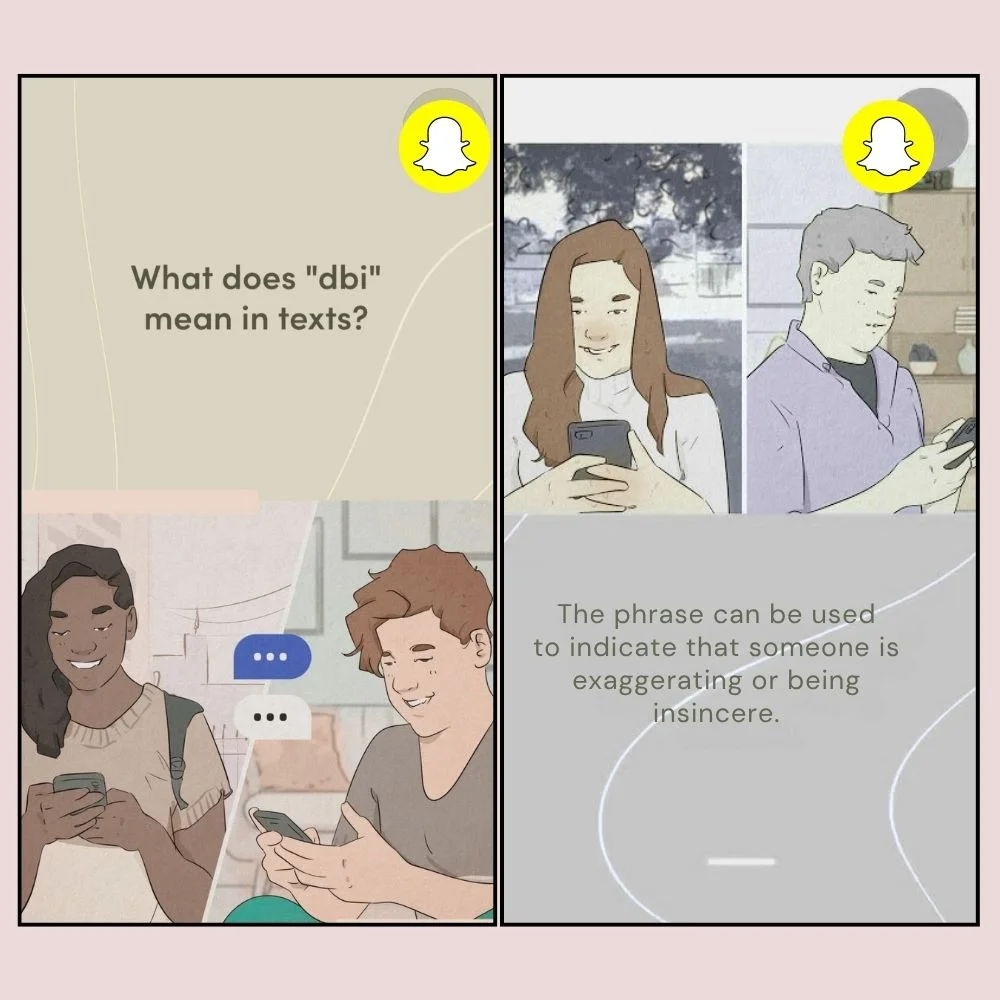
DBI is slang shorthand that stands for “Don’t Beg It.” It’s used when one person is asking or begging for something that the other person thinks is unreasonable or unlikely to happen. Essentially, DBI is a friendly, brief way to say, “Don’t ask me for that” or “That’s not going to happen.”
The phrase “Don’t Beg It” is a kind reminder that if you want something, you need to work for it rather than simply asking or hoping for it. It’s not rude it’s more encouraging than dismissive.
Why Has DBI Gained Popularity?
Short, expressive acronyms work well in fast-paced chat apps like Snapchat. DBI became part of the online slang world because it:
- Fits perfectly into character-limited captions or quick video responses
- Offers a concise way to set boundaries without sounding harsh or rude
- Feels casual and friendly, not preachy
- Adds to Snapchat’s evolving slang dictionary
How to Use DBI? (And Spot It) 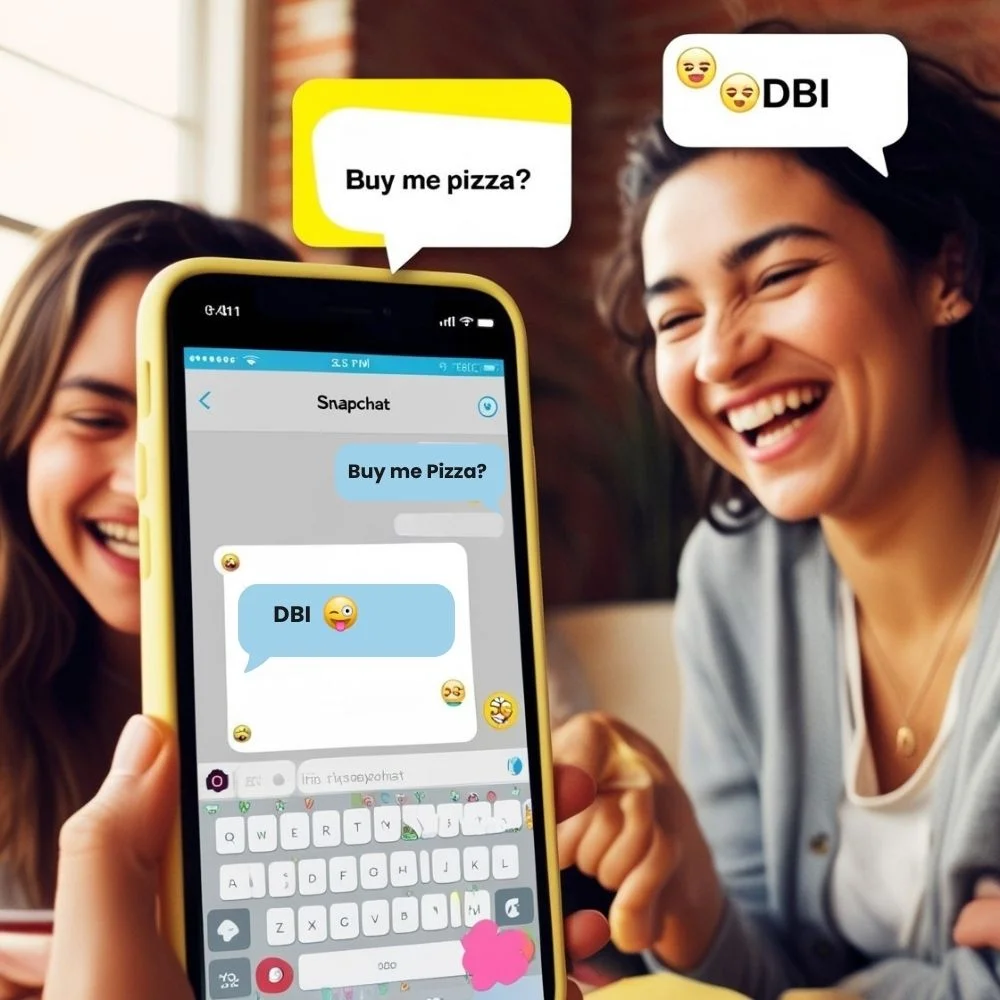
On Snapchat, DBI may show up in different contexts:
- Quick text replies: Friend: “Can you lend me some cash?”
You: “DBI.” - Snap captions: A Snap showing a request for something; caption reads “DBI” to say, “not this time!”
- Group story chats: You can use DBI in threads to address a trending ask that circles back often.
- Emoji + text combos: You might use emoji followed by DBI, to soften the message.
DBI usually comes across as casual, friendly, and to the point. It’s a simple way of saying no without any real drama.
Examples of DBI in Snapchat
Here’s how DBI might appear in everyday Snapchat conversations:
- When someone asks for a big favor
“Can you drive me to the concert tonight?”
“DBI” - Reacting to fun requests
“Buy me that $200 hoodie?”
“DBI” - Group chat pressure
“Let’s skip class today.”
“DBI, gotta go to work!” - Playful banter
“You owe me lunch.”
“DBI, I’m broke!”
These show DBI’s flexible use it can be serious, playful, or very lighthearted depending on the tone.
Similar Slang You Might See
DBI is part of a bigger family of quick slang terms in texting and social chat. Some examples include:
- IDK: “I don’t know”
- BRB: “Be right back”
- SMH: “Shaking my head”
- LOL: “Laugh out loud”
- DM me: “Send me a direct message”
- FWIW: “For what it’s worth”
These acronyms serve a similar purpose: saving time and fitting into short messages.
Origins of DBI
DBI started appearing online in recent years and gained traction through platforms like Snapchat and TikTok. Once it was used in videos and group chats, people quickly picked it up and added it to their everyday digital language.
When NOT to Use DBI?
While DBI is casual, some scenarios aren’t suitable:
- Serious or sensitive topics: Don’t use DBI during tough conversations it could seem dismissive.
- Professional contexts: If you’re messaging a coworker or boss, avoid slang like DBI.
- Misunderstandings: If you’re not close to someone, they might not get the meaning and could take offense.
Tip: Know your audience. Use it with friends or people who understand the slang and your tone. If there’s confusion, follow up with a quick sentence like, “Sorry, no can do.”
How to Respond to DBI?
If someone sends DBI to you, here’s what you can do:
- Don’t push: Respect the response.
- Ask why gently if it’s unclear: “Oh, got it why not?”
- Acknowledge the tone: “Okay, got it!” or “Fair enough.”
- Suggest another option: “Maybe another time?” or “Could you help next week?”
A calm reply helps keep the chat friendly and clear.
Should You Use DBI?
If you chat with Gen Z or close friends, DBI can feel fresh and expressive. It’s a short, casual way to set boundaries or say no without dragging it out. Use it when:
- You want a playful or humorous refusal
- You’re in a casual chat
- You know the person understands the slang
Skip it when:
- The context is serious or emotional
- You’re talking with people who don’t keep up with slang
- You’re in professional settings
FAQs
1. Is DBI rude?
Not really. It’s a casual, quick refusal usually playful or firm but not mean.
2. Can you use DBI aloud?
It’s mainly text slang, so people don’t usually say it out loud. Instead, they’d say “Don’t beg it.”
3. Is DBI used everywhere?
It’s mostly common among younger users of Snapchat, TikTok, and similar platforms.
4. Are there alternatives?
More standard ways to say no include: “nope,” “not gonna happen,” “not today,” “sorry, don’t think so.”
Wrapping Up
DBI stands for “Don’t Beg It” and is a quick way to say “don’t ask” or “that’s not going to happen” in Snapchat and other casual chats. It’s modern, informal, and gets your meaning across fast. Just watch your tone and audience, don’t use it where it might confuse or offend. If you enjoy fun and expressive chat slang, DBI is another cool phrase to add to your digital vocabulary.
